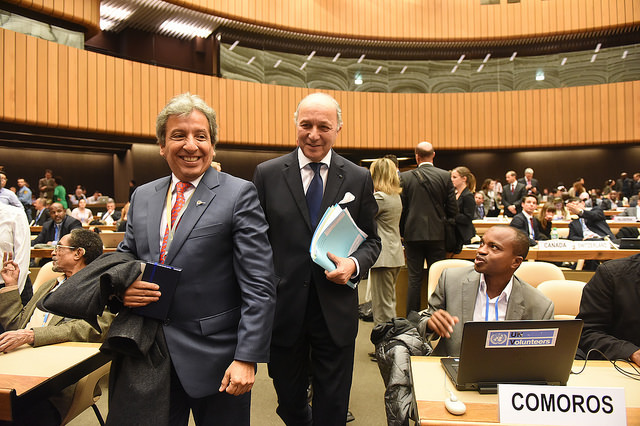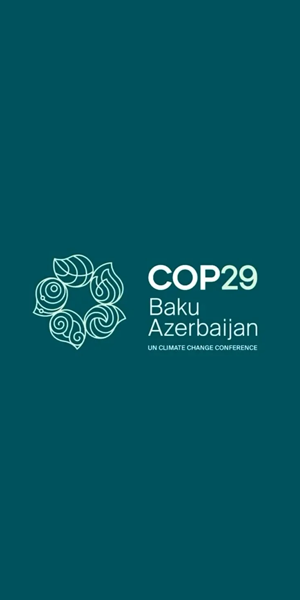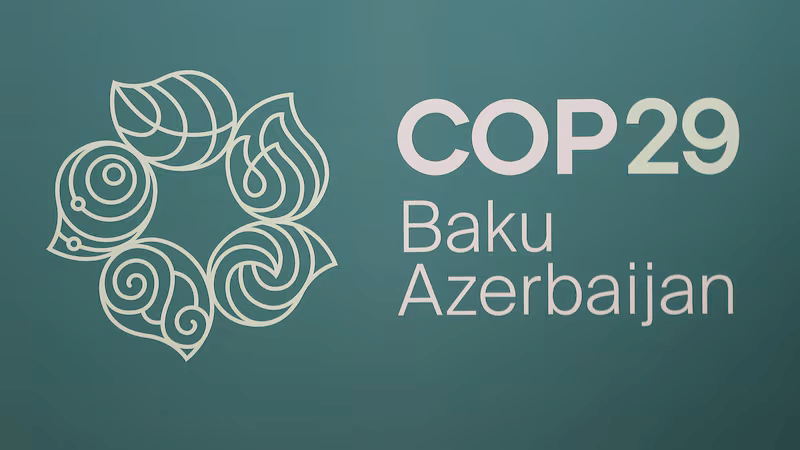
By Atâyi Babs
The road to a new global agreement on climate change has taken a decisive turn as a 20-page draft of the potential global agreement to be negotiated at the Paris climate conference was released today.
The draft, which was prepared by Ahmed Djoghalf and Daniel Reifsnyder, Co-Chairs of the Ad hoc working group on the Durban platform (ADP), the body tasked with drafting the agreement, contains the basis for negotiation of the draft Paris climate package. In addition to the agreement, the package contains a draft of the decision that will drive the agreement from 2020 and a draft decision on pre-2020 ambition.
The release of the draft agreement is a significant pointer to a successful Paris conference as previous version of the draft with over 90 pages, was considered too long and unwieldy for negotiators to grapple with in time for the December deadline.
196 countries who are parties to the United Nations Framework Convention on Climate Change ((UNFCCC) will meet in Paris to forge a new global agreement on the climate, including major cuts to greenhouse gas emissions, that will take effect from 2020, when the current Kyoto Protocol run out.
The draft agreement also seeks to enhance the implementation of the objective of the Convention and strengthen and support the global response to the urgent threat of climate change by further addressing its causes and by further increasing resilience and the ability to adapt to its adverse impacts, with a view to promoting the global transformation to low-emission and climate-resilient societies and economies.
It further reflects common but differentiated responsibilities and respective capabilities, in light of different national circumstances. The new text recognizes that deep cuts in global greenhouse gas emissions are urgently required, with a view to reducing such emissions so as to hold the increase in the global average temperature 2 °C.
Mitigation
“Parties aim to reach by [X date] [a peaking of global greenhouse gas emissions][zero net greenhouse gas emissions][a[n] X per cent reduction in global greenhouse gas emissions][global low-carbon transformation][global low-emission transformation][carbon neutrality][climate neutrality]”the draft says.
In addition, the draft enjoins each Party to regularly communicate a nationally determined mitigation [contribution] that it can implement. The mitigation contribution is expected to reflect a progression beyond its previous efforts, noting that the Parties that have previously communicated economy-wide efforts should continue to do so in a manner that is progressively more ambitious and that all Parties should aim to do so over time.
Each Party, according to the draft should provide the information necessary for clarity, transparency and understanding, in accordance with decision 1/CP.21 when communicating its nationally determined mitigation [contribution].
Adaptation
The draft agreement recognises that adaptation is a challenge faced by all, with local, national, regional and international dimensions, and that it is a key component of and contribution to the long-term global response to climate change to protect people, livelihoods and ecosystems.
Therefore, Parties should share the goal of increasing resilience and reducing vulnerability to climate change, and acknowledge that adaptation action should follow “a country-driven, gender-sensitive, participatory and fully transparent approach, taking into consideration vulnerable groups, communities and ecosystems, and should be based on and guided by the best available science and, as appropriate, traditional and indigenous knowledge, with a view to integrating adaptation into relevant social, economic and environmental policies and actions where necessary”the draft added.
The drraft agreement expects parties to enhance their cooperation, including with respect to sharing information, best practices, experiences and lessons learned, strengthening institutional arrangements to support the synthesis of relevant information and knowledge as well as the provision of technical guidance and support.










